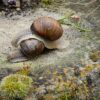Your pond is a wonderful environment for a variety of living creatures. You may be wondering is it easy and how to keep pond water clean for fish and other aquatic life. It is highly significant to make sure it’s healthy for both your fish and plants. A pond with clear water is also considerably more appealing to the eye than a muddy water garden.
Most pond owners are fully aware of the importance of high water quality in a pond ecosystem. However, understanding how to get or maintain water quality might be difficult for some pond owners. Our helpful hints will help you keep pond care to a bare minimum so you can relax and enjoy your water garden more!
SELECT THE APPROPRIATE PUMP SIZE FOR YOUR POND
Pumps are the beating heart of every water feature, constantly moving water and providing aeration to ensure a healthy habitat. Pump Size is crucial to the health and performance of any water feature, and you want to be sure you choose the right one.
It would be best to circulate the whole pond’s water volume at least once per hour to maintain excellent water quality. If your pond holds 1,000 gallons of water, you’ll need a pump that can move 1,000 gallons per hour or more.
Other factors, such as the height of your waterfall and the length of tubing that connects your pump to the waterfall, come into play when selecting the right pump.
SELECT THE RIGHT FILTRATION FOR YOUR POND
The most effective technique to filter water is to use a biological filtration system in conjunction with a mechanical filter (such as a skimmer) to remove particulates before the water reaches the biological filtration unit. Designing and implementing an effective circulation and filtration system ensures that the water is oxygenated and that pond waste (such as leaves, floating algae, and other blown-in detritus) is swept off the pond’s surface and placed in a skimmer basket that can be quickly emptied.
A biological filter is built into Aquascape ponds and acts as the beginning of the cascade. The waterfall’s action boosts the pond’s oxygen levels. Your skimmer should be on the other side of your pond, if possible. Skimmers have a basket that collects leaves and debris for quick clean-up, as well as space to store your pump
A HEALTHY FISH POPULATION MUST BE MAINTAINED
Because pond owners adore their fish, it’s easy to overcrowd your pond – especially if your fish have offspring! For every 100 gallons of water in your pond, you should have no more than 10″ of fish; for example, if you have one 10″ fish, your pond should be no less than 100 gallons.
If you have two 10″ fish totalling 20 inches, your pond should be no less than 200 gallons; if you have 20 fish of varying lengths totalling 300 inches, you’ll need a 3000-gallon pond. This is crucial because you don’t want to have too much fish waste in your pond, promoting an unhealthy imbalance.
REMEMBER NOT TO OVERFED YOUR FISH
Interacting with your fish is one of the many pleasures of pond ownership. Many people teach their koi to feed on their hands! However, when you give fish more than they can consume, the uneaten food decays in the pond. This can have an adverse effect on the quality of your pond’s water.
Feed your fish no more than once a day, and only as much as they can consume in two to three minutes. Remove any surplus or leftover food from your pond to prevent it from spoiling.
PLAN AN APPROPRIATE BALANCE OF PLANTS
Plants in the pond absorb excess nutrients and help filter the water. Plants such as water lilies and water lettuce also assist in shading the pond and keeping the water cooler during the hot summer months.
During the peak pond season, you should ensure that plants cover or shade 40 per cent to 60 per cent of your pond’s surface area. On the other, too many plants can produce nighttime oxygen deficiency owing to the photosynthetic process, in which plants take in oxygen and emit carbon dioxide.
You’ll appreciate the beauty given by a diverse assortment of pond plants, which are divided into four fundamental groups. Waterlilies are popular because of the wonderful colour they provide to a pond. Hardy lilies will return year after year if properly overwintered. In most areas, tropical waterlilies die throughout the winter months and are considered annuals. Marginal plants grow in shallow water on the pond’s borders.
They come in blooming and non-flowering varieties, and they smooth rock edges while also providing filtration. Water lettuce and water hyacinth, for example, float on the surface of the pond, their roots hanging in the water. Finally, oxygenators are placed at the pond’s bottom to give fish hiding places.
CLEAN YOUR POND OF DEBRIS
Ammonia levels in your pond might rise due to decaying leaves and debris, as well as fish excrement and leftover fish food. Ammonia levels that are too high might stress your fish and make them sick. Remove any withering leaves or plants, as well as any uneaten fish food, before it decomposes.
Your pond should be free of leaves and plant detritus during the summer, but any decaying leaves from aquatic plants should be trimmed. Install Protective Pond Netting over your water feature before the leaves start to fall from the trees to make leaf control simpler in the autumn. Beneficial bacteria, for example, may be fed to your pond on a regular basis to help keep the water healthy and clean.
KEEPS YOUR POND COOL DURING THE SUMMER DAYS
When the pond water temperature rises over 75 degrees Fahrenheit, it becomes more difficult to maintain sufficient amounts of dissolved oxygen. Waterlilies, water lettuce, and other aquatic plants may help keep your pond cool by providing shade. Pond Tint can be used instead to shade the water and keep it cool.










